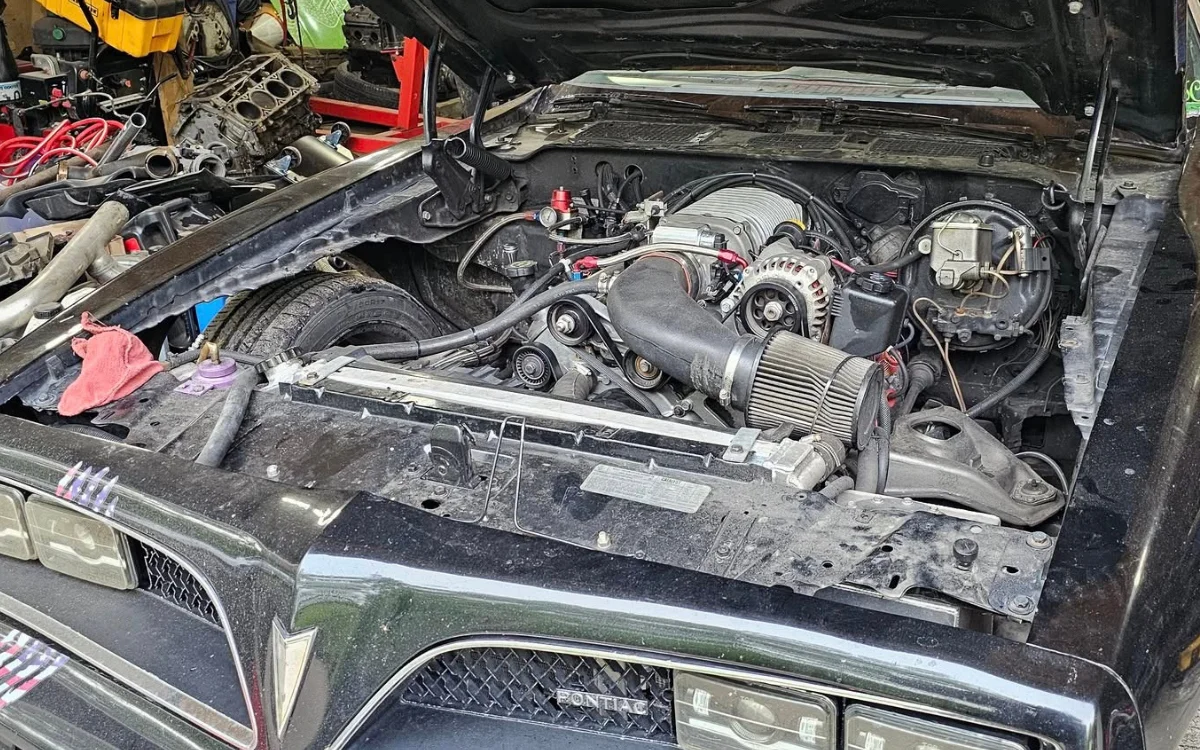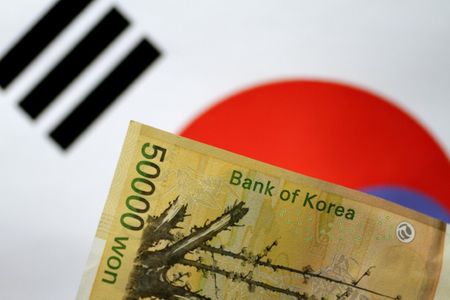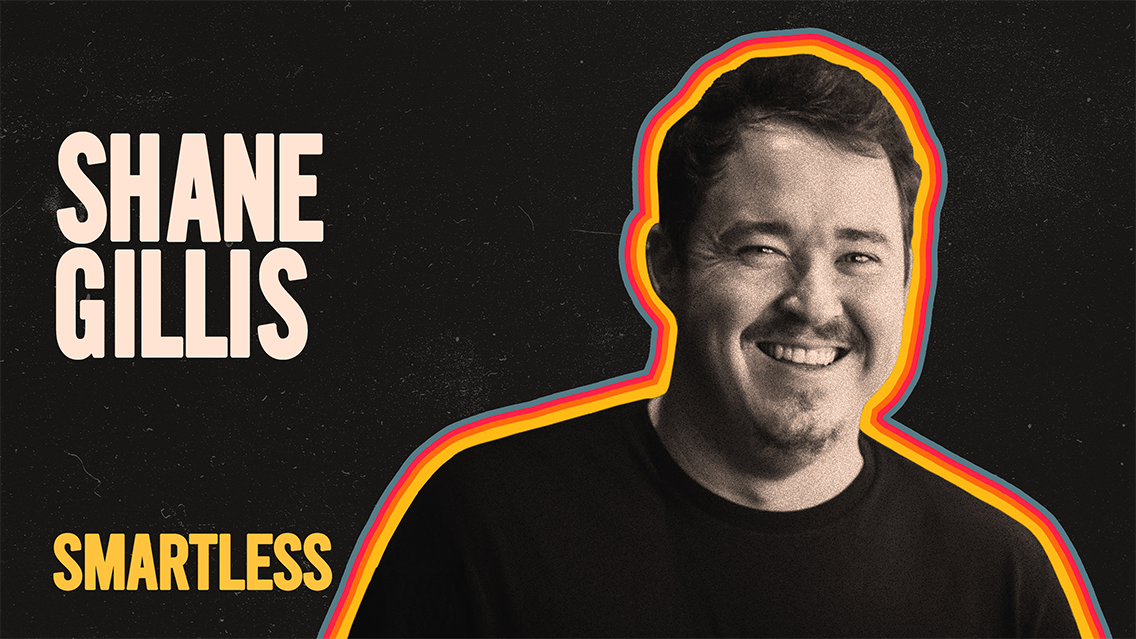King Gizzard & The Lizard Wizard Are Changing What a Rock Band Can Be: ‘We Can Just Do What We Do And Not Think Twice’
The group has amassed a cult following entirely on its own terms — and the eccentric Australians are determined to push the boundaries of what a rock band can be.

As dusk descends on a muggy August evening at Forest Hills Stadium in Queens, smoke and sweat hang in the air. Australian psych-rockers King Gizzard & The Lizard Wizard have just hit the hour mark in what will be a marathon three-hour set — and despite the suffocating heat, a person in a hooded, red velvet cloak is prowling the floor, which is almost entirely consumed by a mosh pit; someone in a Smurf costume crowd-surfs as a couple of beach balls lazily arc through the air. Then, with little warning, a few dozen fans in the pit sit down — and start to row, like warriors on a Viking ship.
The first time King Gizz vocalist and multi-instrumentalist Joey Walker observed the rowing phenomenon was in 2019, when the band played Utrecht in the Netherlands. “I was just like, ‘What the f–k is that?’ ” he recounts, still sounding a tad surprised. “And it caught on like fire!”
“The rowing thing is very strange,” says Stu Mackenzie, also a singer and multi-instrumentalist in the band who, like Walker, first recalls observing the rowing at that Utrecht show. “It seems like people all over the world do that now — I don’t know what’s going on there. It’s some kind of weird, unique thing.”
Welcome to the Gizzverse — the very weird, truly unique world of the genre-hopping, proudly DIY Australian band proving that even in 2025, rock groups can still break big on their own terms. Spontaneous rowing didn’t actually start at King Gizz shows (it has its origins in European heavy metal concerts, particularly those of the Swedish group Amon Amarth), but it’s become just one of the many idiosyncrasies of the globe-trotting, increasingly popular band. And it reflects one of the many musical worlds King Gizz has drawn on with its voluminous output: Across 27 studio albums dating back to 2012, the freakishly prolific group has experimented with raging metal, pastoral folk, shimmering electropop, dense prog, far-out psychedelia, heavy jazz fusion and straight-ahead ’70s rock, while challenging itself with microtonal tunings, orchestral arrangements and other unusual musical strictures.
In the process, King Gizz has amassed an unprecedented following that spans music fans of all stripes. Last year, the band grossed $6.9 million and sold 112,000 tickets over the 18 shows it reported to Billboard Boxscore (it played 63 shows in 2024), including multishow runs at Forest Hills and Colorado’s Red Rocks Amphitheatre. Its concerts are full of eye-popping costumes, outrageous hijinks (at a Maine show last summer, Mackenzie leapt from the stage and plunged into the nearby Fore River; at the band’s first show of 2025, in Lisbon, he shaved his head onstage) and high-octane performances that can leave fans as exhausted as the band itself, which commonly logs two or three hours onstage.
“I hope that there are jam band fans who stand next to metalheads who stand next to ravers at the show,” Mackenzie says. “I hope that the King Gizz community is a place where everyone feels welcome and accepted and can feel like they can be whoever they want to be — because that’s, at the end of the day, what the music is all about.”
The members of King Gizz, who are all between 32 and 36 years old, grew up in and around Melbourne and have been playing together since they were teenagers. Coming of age with the music piracy of the 2000s, and later streaming, they — like most millennials — became accustomed to “all music at your fingertips at all times,” Mackenzie says. “It always seemed to be OK to listen to John Coltrane and then Slayer back-to-back. I never really thought about that as being an unusual thing to do.”
From the jump, King Gizz — whose current lineup of Mackenzie, Walker, Michael Cavanagh, Lucas Harwood, Cook Craig and Ambrose Kenny-Smith solidified in 2011 — embraced the unusual and extended its voracious, eclectic listening habits to its studio recordings and live shows. In the 2010s, as King Gizz built a following, many casual music observers knew two things about the band: its long, ridiculous name and its unceasing studio output, which in one year, 2017, comprised five studio albums. The release strategy, to put it mildly, cut against industry norms.
“They wanted to do it at their own pace because they were creating music and they wanted to share that music with their fans,” says Panache founder Michelle Cable, who has booked the act since 2013 and has managed it since 2020. “It’s only helped them. They’ve kept people engaged consistently for the last decade, and it’s always refreshing. It’s always something new and surprising. And you can tell how much they’re enjoying what they’re doing, and that translates in the albums, in the live space.”
“We have this superpower where we can just do what we do and not think twice about how it will be perceived — or, like, not adhere to the normal mechanisms of how an album cycle [works], all that stuff,” Walker says. Adds Mackenzie: “I just don’t think we spend a lot of time looking outward at what other people are doing. We’ve been doing this long enough that we know what works for us. We’ve been lucky that we have been able to put the art first, and the whole business element of the thing has just followed.”

Today, King Gizz intimately understands what works best for it as a band — but that hasn’t stopped the group from relentlessly reimagining itself, from the styles it puts to wax to the concert formats it brings to the stage. Take a few of the nine albums it has released since 2022: There’s Ice, Death, Planets, Lungs, Mushrooms and Lava (each word corresponds to one of the seven modes of a musical scale — “Ice” is Ionian, for instance — that informed its sessions), and Made in Timeland and Laminated Denim (albums with titles that are anagrams of each other that each consist of two, precisely 15-minute-long tracks). There’s PetroDragonic Apocalypse; or, Dawn of Eternal Night: An Annihilation of Planet Earth and the Beginning of Merciless Damnation (a lore-filled heavy metal album), The Silver Cord (a synthesizer-based electropop set informed by the band’s resident dance music expert, Walker) and Phantom Island (King Gizz’s most recent album, where it’s backed by an orchestra).
“I do recognize that other people don’t make music like this,” Mackenzie says with a knowing laugh. “It always did feel natural to play this kind of music today and play another kind of music tomorrow. If we’re not challenged in the studio, it’s very boring. I really want to feel like I’m just at the edge of what I feel capable of doing — and that goes to everything that we’ve done in the band.”
When the needle drops on a King Gizz record or the band sets foot onstage, its eccentricities, ambitious world-building and formidable chops are on full display. At its shows, so is the camaraderie it has built with its devoted and ever-growing fan base. Taken together, all that coalesces into the singular and thrilling King Gizz experience — one that die-hards chase from album to album and from show to show.
“The amazing part about them is that they just do not limit themselves — and never have,” says Dead Kennedys founding frontman Jello Biafra, who became Gizz-pilled after buying one of its albums, 2014’s I’m in Your Mind Fuzz, at a used-record store several years ago, based only on its wild artwork and the band’s name. “I put the record on, and it blew me through the wall.” Mind Fuzz sparked an obsession for Biafra, who has since traveled to see multiple runs by the band at Red Rocks and can opine at length about King Gizz’s band members and its many musical flavors (“the pile-driving space-rock jams get me every time”). “They’re my favorite band in the world now,” he says. “This is the cool s–t.”
And while Biafra is a fan in spite of, not because of, King Gizz’s at-times expansive jamming — “Unlike the Grateful Dead, they’re good!” he declares — the jam world has gravitated to the band. “I always just wanted to be with my friends jamming, and I get that same vibe from King Gizz,” Phish frontman Trey Anastasio, who has been seeing the band for years, told Relix in 2023. “I immediately loved them and could relate.”
As Mackenzie points out, jam band culture “just doesn’t exist” in Australia, and King Gizz has never considered itself part of that world. “We don’t see ourselves as a jam band, per se,” Walker says, though he adds that “one thing that’s kind of cool about that crossover is if people are calling us a jam band, or we’ve all of a sudden been taken under that umbrella, that we are bringing something really different to the sphere.” In other words, he says, “we’re not a band that ever listened to Phish,” but could be “a new version of what would constitute the traditional jam band.”

Because even if King Gizz doesn’t consider itself a jam band, the world it has created is highly legible to jam fans. Eclectic as its music may be, it’s still best classified as psychedelic rock. Its shows feature different setlists every night, stretch to intimidating lengths and include lots of improv. The group’s superfans, known as the Weirdo Swarm, follow it from show to show, many of them hawking bootlegged merchandise outside venues; those who can’t follow along on livestreams. Tapers record gigs and fans dissect sets and craft memes online. And, critically, King Gizz’s visuals are central to the experience: Artist Jason Galea has designed all the band’s trippy album artwork and also does tour posters and its graphics onstage; “he’s like the seventh member of the band, in many, many respects,” Walker says.
“It’s been a natural evolving collaboration from the start, with lots of care put into everything to make it a whole experience,” Galea tells Billboard. “With more experience and a constantly growing visual history of the band to be inspired by, I’m creating things with more depth and detail.”
King Gizz has further spread that experience — both audio and visual — by making its music and iconography easy for fans to access and manipulate. The band, which today releases music on its own label, p(doom) Records (with distribution by Virgin Music), makes many of its concerts available for free on Bandcamp and has let listeners and indie labels make their own vinyl pressings of its recordings, offering up .wav files, photos and artwork in exchange not for a licensing fee, but for some copies of the finished product. At some shows, King Gizz even arranges record fairs where these bootlegs can be sold.
“I always just thought it was cool,” Mackenzie says. “If someone’s making art and it has something to do with the band, it’s not in my heart to stop anybody from doing that. It’s not in my DNA — like, I remember being a person like that. It doesn’t feel very different to how we make music.”
This community-generated merch will have a dedicated area — the “Mirage City” Bootlegger Alley — at the inaugural Field of Vision, King Gizz’s new three-day camping festival that will debut in Buena Vista, Colo., in August. The band eschewed a major promoter, Cable says, in favor of dealing directly with the festival site, Meadow Creek; the event will feature three three-hour King Gizz sets, along with performances by like-minded artists such as Babe Rainbow, Ryley Walker and White Fence, not to mention a DJ set by Biafra.
Field of Vision is the crown jewel of King Gizz’s ambitious summer agenda. Before inclement weather forced Bonnaroo’s cancellation, the band was set to be the famed festival’s first residency, booked for three different days. “They transcend genre, they have a huge catalog, and they have a die-hard fan base that loves what they do,” says Live Nation/C3 Presents promoter Stephen Greene, who has been involved in booking Bonnaroo for nearly two decades. “They’re game to do cool, out-of-the-box stuff.”

On July 28, King Gizz will kick off an orchestral tour, where eminent ensembles — like the Orchestra of St. Luke’s in New York and Connecticut and the Chicago Philharmonic in the Windy City — will back the band as it brings Phantom Island and selections from its catalog to life under the direction of conductor Sarah Hicks. “They’ve had so many aesthetic worlds that it was really fun to see the evolution and the real variety of stuff they’ve done,” says Hicks, who has worked with Sting, Smokey Robinson, Ben Folds and more non-classical acts and lauds King Gizz for its wide-ranging musical ambition and knowledge.
Come fall, King Gizz will split a European run between such orchestral shows and what it’s billing as a “rave tour.” “Part of it was just us thinking that it was incredibly funny to have this handful of shows with an orchestra doing, like, Royal Albert Hall [in London], and then the other half of the tour just says ‘rave shows’ on it,” Walker jokes — though, in all seriousness, King Gizz has recently taken to trotting out a hulking assemblage of synthesizers during its live shows, and Walker says the band plans to “record a whole bunch of music” when its synthesizer technician visits the group in Australia between its American and European touring legs.
If all this sounds like a lot, well, it is. But King Gizz wouldn’t have it any other way. “I want to feel like I’m just, like, no seat belt on the roller coaster, just hanging on,” Mackenzie says. “That’s the feeling I think we’re chasing in the studio, onstage, making records, doing a show with an orchestra, doing a rave tour. Maybe that’s the adrenaline junkie in me that just found this instead of f–king parkour or something.”
This story appears in the July 19, 2025, issue of Billboard.
What's Your Reaction?










































